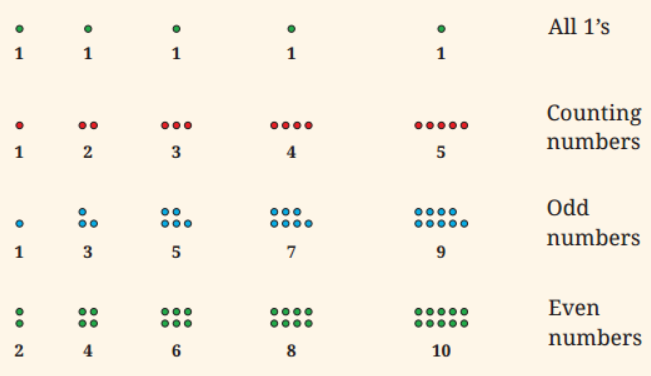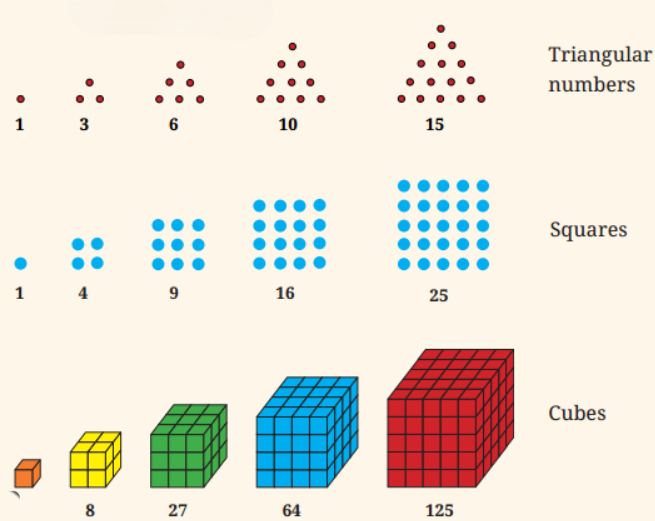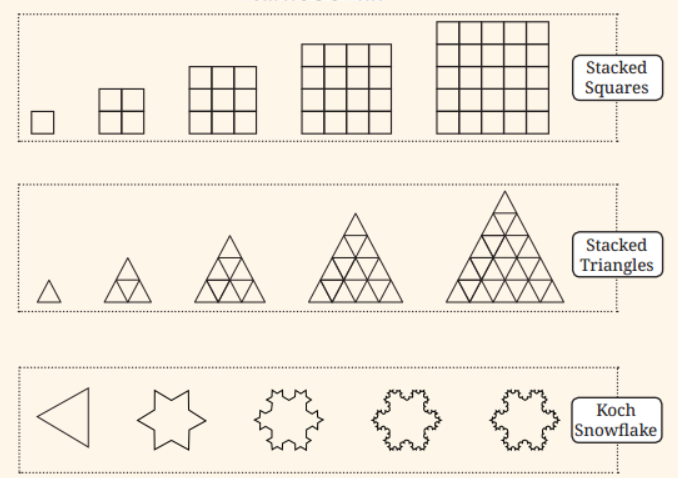Patterns in Mathematics – Complete Guide For Class 6 Math Chapter 1
Welcome to iPrep, your Learning Super App. Our learning resources for the chapter, Patterns in Mathematics in Mathematics for Class 6th are designed to ensure you grasp this concept with clarity and perfection. Whether you’re studying for an upcoming exam or strengthening your concepts, our engaging animated videos, practice questions and notes offer you the best of integrated learning with interesting explanations and examples.
The chapter on Patterns in Mathematics is designed to introduce students to the fundamental concepts of mathematical patterns. It covers both numerical and geometric patterns, emphasizing their role in mathematics and their relevance to everyday life. The chapter focuses on understanding various types of patterns, including number sequences and geometric shapes, and explores how these patterns can be visualized and connected. By the end of this chapter, students will develop a clear understanding of mathematical patterns, which will serve as a foundation for more advanced mathematical concepts and their practical applications.
Patterns in Mathematics
Mathematics extends beyond mere numbers and equations; it is an engaging journey to uncover and comprehend the patterns that exist in different forms around us. This chapter explores these patterns in-depth, illuminating the essence of mathematics and its wide-ranging applications.
What is Mathematics?
Mathematics is often described as a search for patterns and the explanations behind them. These patterns are not limited to abstract numbers; they are all around us—ranging from natural phenomena to daily activities. Whether it’s the arrangement of objects in our homes, the cycles of celestial bodies, or the structures in technology, patterns are everywhere.
Patterns in Numbers
One of the most fundamental aspects of mathematics is the study of patterns in numbers. This branch of mathematics, known as number theory, explores various sequences and patterns within whole numbers. Here are some essential number sequences you will encounter:
- All 1’s: 1, 1, 1, 1, 1, 1, …
- Counting Numbers: 1, 2, 3, 4, 5, 6, 7, …
- Odd Numbers: 1, 3, 5, 7, 9, 11, 13, …
- Even Numbers: 2, 4, 6, 8, 10, 12, 14, …
- Triangular Numbers: 1, 3, 6, 10, 15, 21, 28, …
- Square Numbers: 1, 4, 9, 16, 25, 36, 49, …
- Cube Numbers: 1, 8, 27, 64, 125, 216, …
- Virahanka Numbers: 1, 2, 3, 5, 8, 13, 21, …
- Powers of 2: 1, 2, 4, 8, 16, 32, 64, …
- Powers of 3: 1, 3, 9, 27, 81, 243, 729, …
These sequences are not just numbers; they represent different patterns and structures that can help us understand more complex mathematical concepts.
Visualizing Number Sequences


Visualization is a powerful tool in mathematics. By representing number sequences with pictures or diagrams, you can gain a clearer understanding of the patterns. For instance:
- Squares: Visualize square numbers by arranging dots in a square grid.
- Triangular Numbers: Picture these as triangular arrangements of dots.
- Cubes: Imagine these numbers as stacked cubes.
These visual representations help illustrate why certain patterns exist and can make abstract concepts more tangible.
Relations Among Number Sequences
Number sequences can often be related in intriguing ways. For example, when you sum odd numbers sequentially:
- 1=1
- 1 + 3 = 4
- 1 + 3 + 5 = 9
- 1 + 3 + 5 + 7 = 16
- 1 + 3 + 5 + 7 + 9 = 25
- 1 + 3 + 5 + 7 + 9 + 11 = 36
You discover that these sums produce square numbers. This pattern is not only beautiful but also demonstrates how understanding one sequence can reveal insights into another.
Patterns in Shapes
Mathematics also explores patterns in shapes, which can be in one, two, or three dimensions. This field, known as geometry, studies various shape sequences:
- Stacked Triangles
- Complete Graphs: K₂, K₃, K₄, K₅, K₆
- Stacked Squares
- Koch Snowflake
- Regular Polygons: Triangle, Pentagon, Hexagon, etc.


Relation to Number Sequences
These shape sequences often have fascinating relationships with number sequences.
For example, the number of sides in the sequence of regular polygons corresponds to the counting numbers starting at 3: 3, 4, 5, 6, 7, 8, 9, 10, and so on. These shapes are known as regular polygons because they have equal-length sides and equal angles. This relationship illustrates how shape sequences can connect with number sequences in surprising ways.
Mathematics is fundamentally about identifying and understanding patterns. Whether through number sequences or shapes, these patterns provide a deeper insight into the world around us. By visualizing sequences and exploring their relationships, you can uncover the underlying beauty of mathematical concepts and their real-world applications.
In conclusion, CBSE Class 6th Math Chapter 1 – Patterns in Mathematics provides a foundational understanding of how patterns shape the world of mathematics. From number sequences to geometric shapes, students gain valuable insights into the relationship between different types of patterns. By mastering the concepts in Patterns in Mathematics, learners not only sharpen their analytical thinking but also build a strong base for more advanced topics.
This chapter, Patterns in Mathematics, encourages students to see the world through a mathematical lens, revealing patterns in everyday life. Through iPrep’s comprehensive resources, mastering Patterns in Mathematics becomes an engaging and enriching journey. By the end of Patterns in Mathematics, students will have developed the ability to identify, visualize, and relate various patterns, setting them up for future success in mathematics and beyond.
Practice questions on Chapter 1 - Patterns In Mathematics
Get your free Chapter 1 - Patterns In Mathematics practice quiz of 20+ questions & detailed solutions
Practice Now









thanks